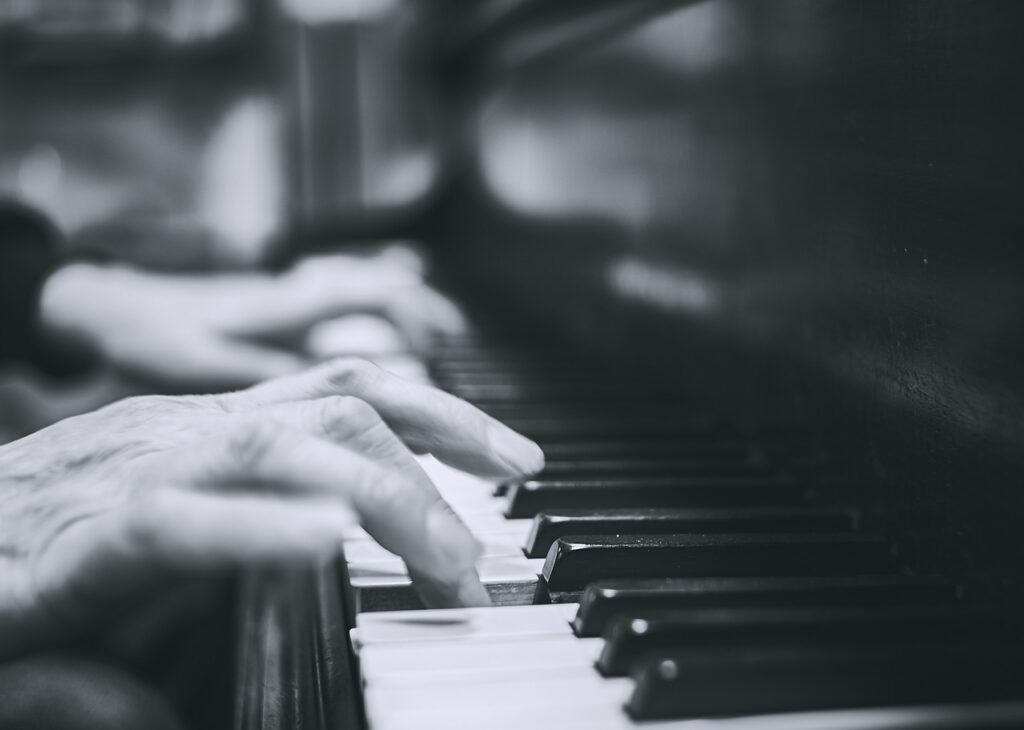When most people think of musical improvisation, they think of Jazz. However, there are many other kinds of improvisation. In Indian classical music, for example, improvisation is one of the primary methods of music making. You may have heard of the great sitar player Ravi Shankar who once played with the Beatles. Improvisation was integral to Western classical music from about 1600 to 1850. After this time, classical improvisation died off.

Very early in my musical development I knew that I wanted improvisation to be a key focus of my playing. Specifically I wanted to focus on the lost art of classical improvisation. This means spontaneously creating music in a classical style extempore. At that time guitar was my primary instrument. In order to create the types of complex textures that exist in classical music I knew I would have to master the piano. One of these textures is what we call counterpoint. Counterpoint is a type of music in which there are two or more distinct melodic lines, each with its own unique contour and rhythm. This is different from most musical textures where there is a melody in the forefront and an accompaniment playing somewhat bland chords in the background.
There is a blurry line between improvisation and composition. The differentiating factor is time. When composing, one has ample time to create something and revise it. If something doesn’t work, one can modify it several times before it is finalized. In improvisation everything happens now. That means there is no time to ponder your next move. Revisions are not an option, nor are mistakes. You make a choice and you play a split second after you conceive of it.
The type of improvisation that I do is even a little more extreme. In styles such as Jazz or Indian classical music, there is an existing melody or framework which musicians work within. In Jazz there is a lead sheet with the chords and melody written out. That means players can familiarize themselves with the structure of the piece before playing.
When I play everything is created in the moment. The chords, the melody, the form – all of it is created and implemented during the performance, often in front of a live audience. Even with this being the case the line between improvisation and composition is still blurry. I definitely prepare before I perform. I play scales, chords, arpeggios, rhythmic patterns, contours and a mountain of other material. Therefore when I improvise I’m not creating from nothing. I’m using patterns that I am already familiar with and assembling them. In the same way that molecules are made of atoms, my musical creations are made from small atomic building blocks that can be put together like legos.
Starting in 2024 I started doing live performances on TikTok, YouTube and other platforms. This really provided me with an exciting landscape in which to hone my craft. Having an audience creates a level of pressure that some artists such as myself crave. My best performances always happen when there is no safety net. I will often ask the audience to offer me various challenges. For example I will say “Pick any three random notes and I will compose a piece.” Sometimes the audience members are not musicians and I will instead request that they pick random months of the year, which I then correlate with notes on the piano. Another challenge I like is asking the audience to pick any emotion. The suggestions are often fascinating. Most emotions can be expressed well through music although sometimes there are tough ones. One recent request was “Pride”.
Please check the home page to see when the next live event is happening. If you are interested in learning how to improvise on the piano or having me perform at your next event, please fill out the contact form!

Leave a Reply